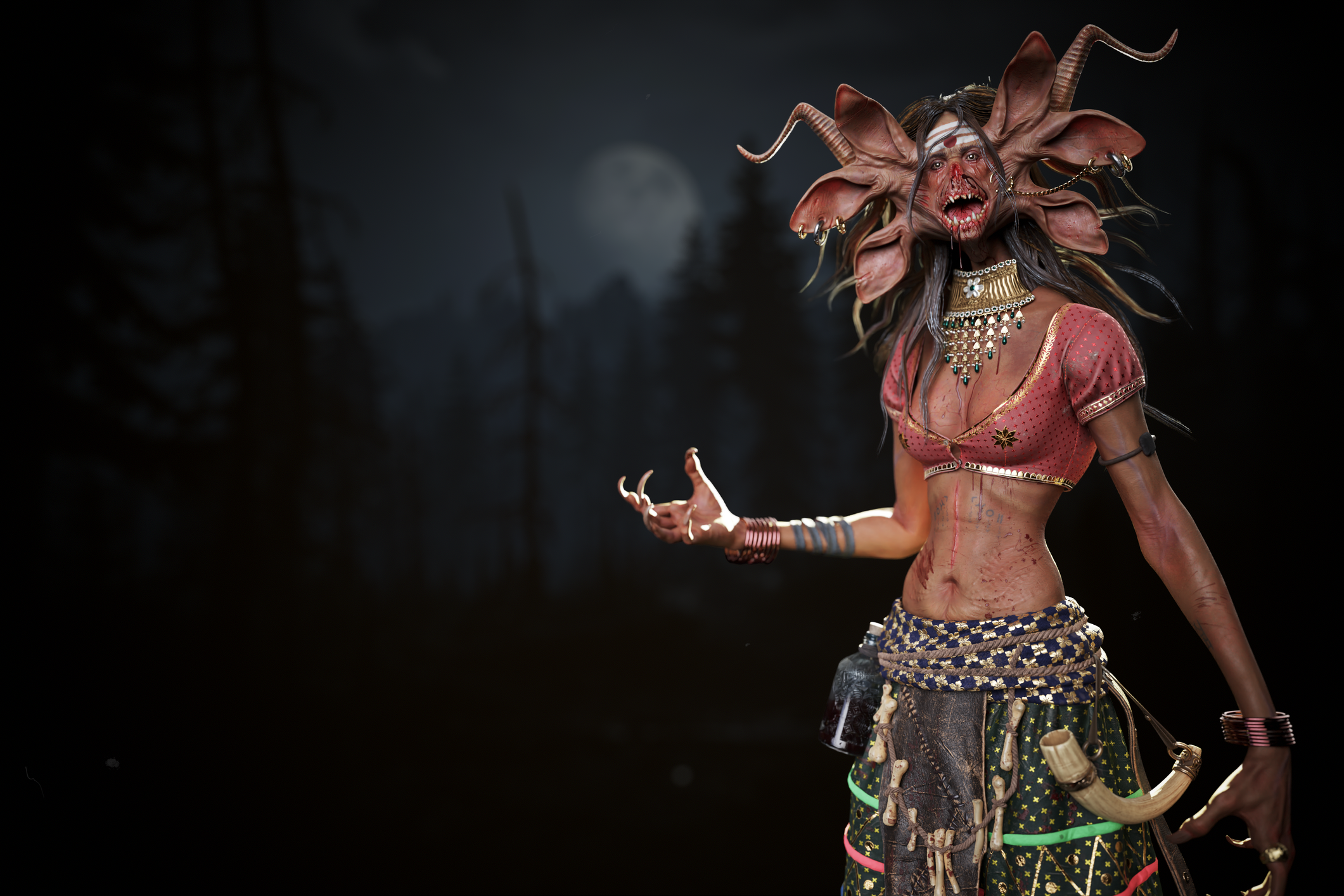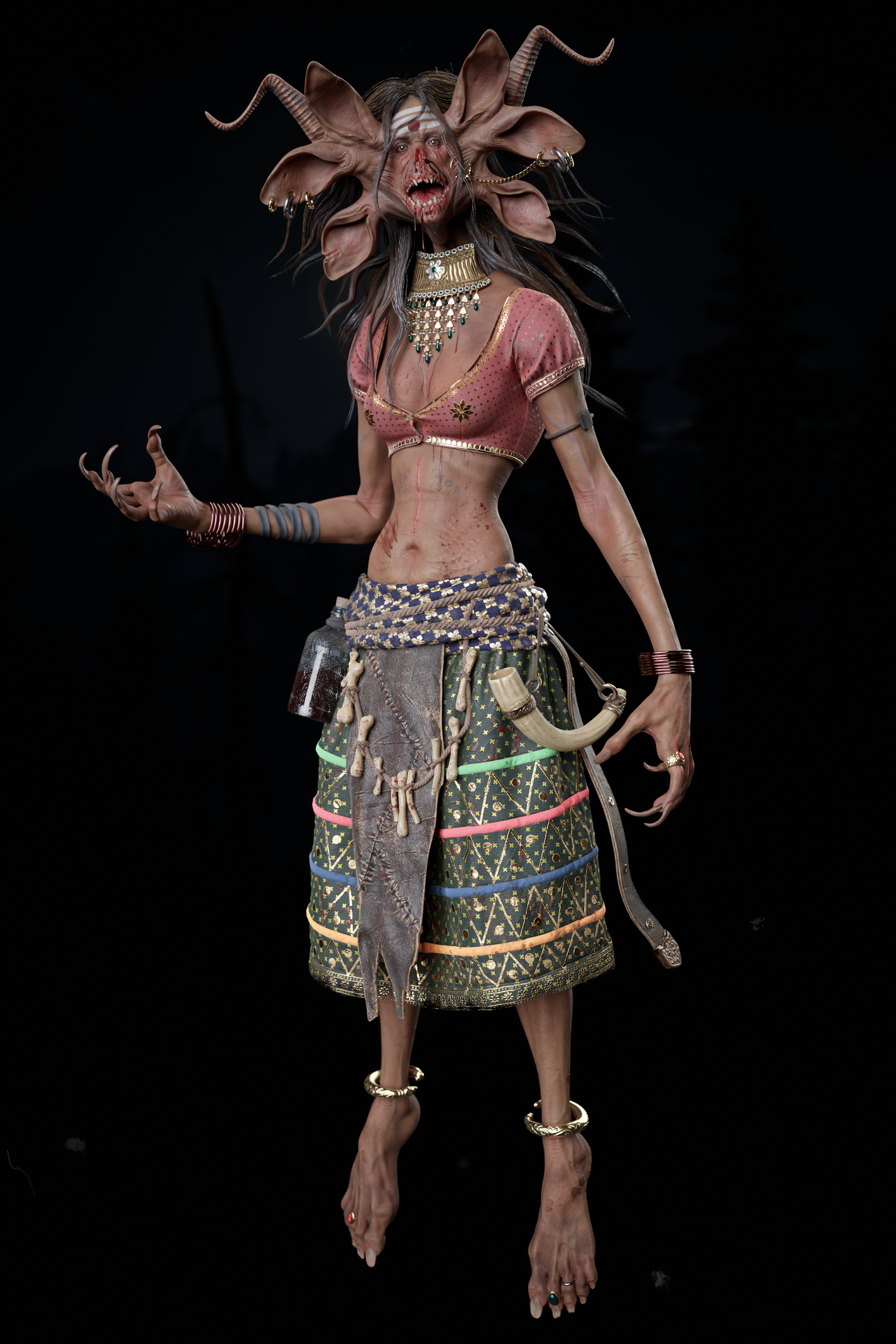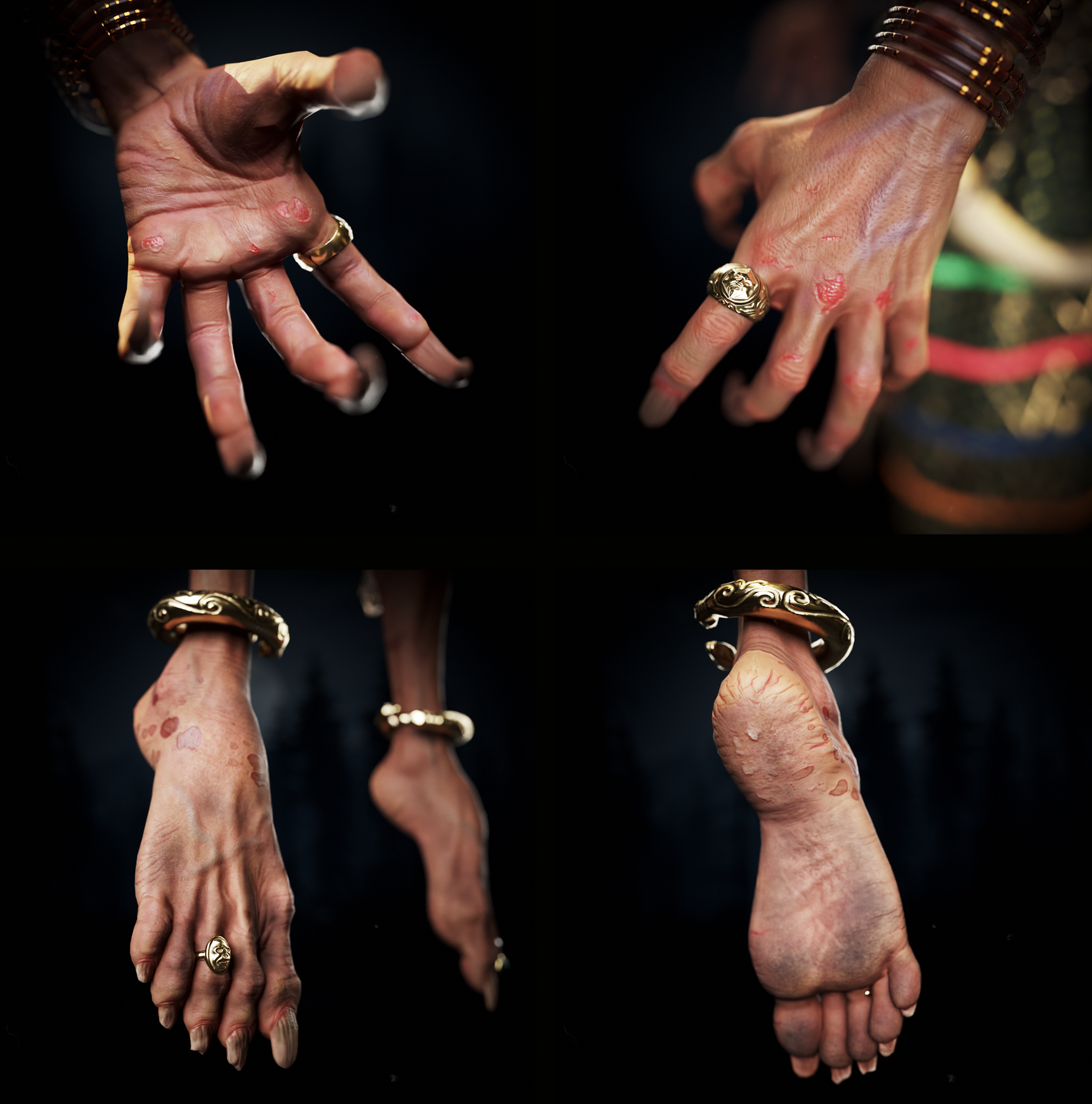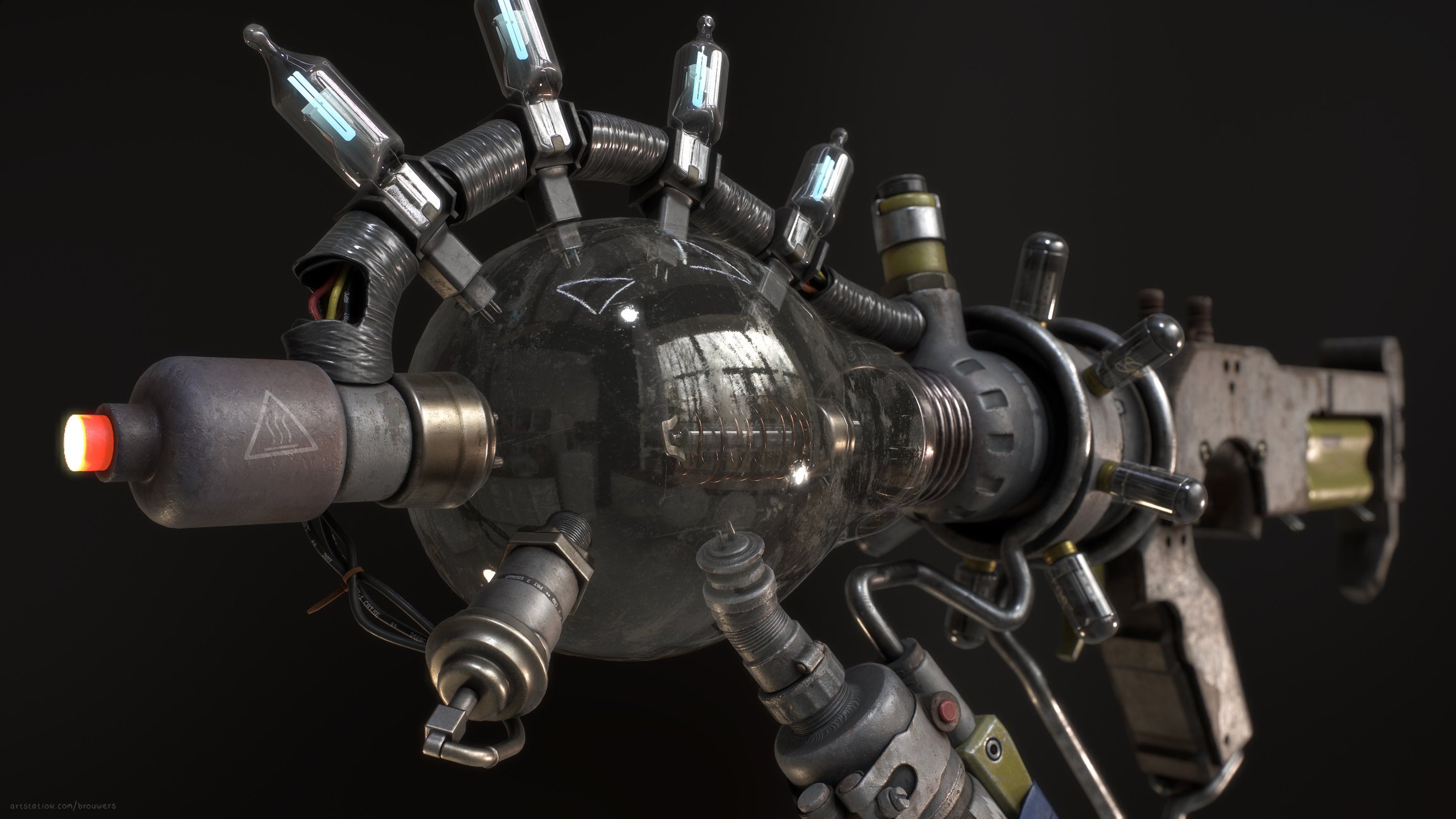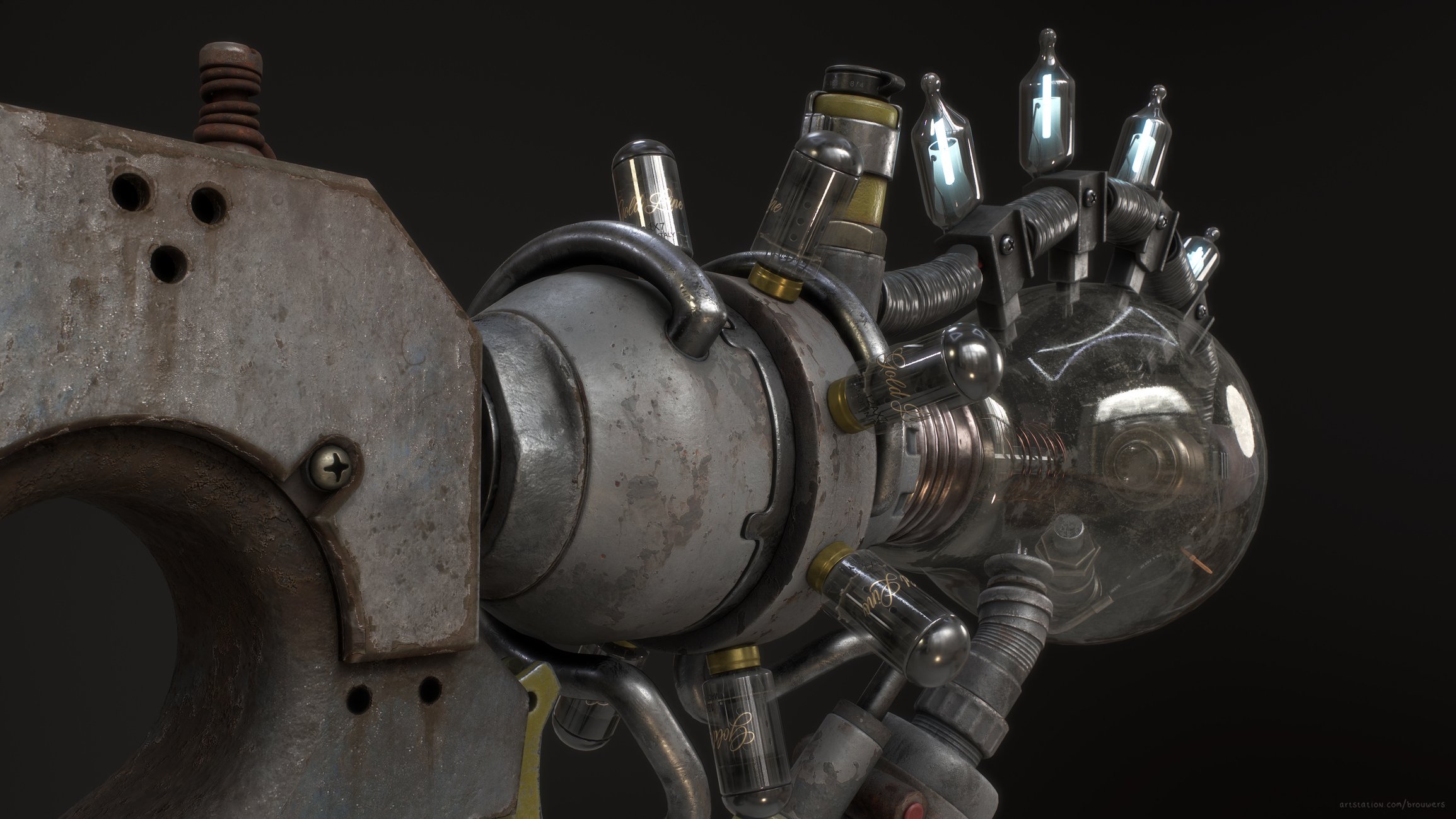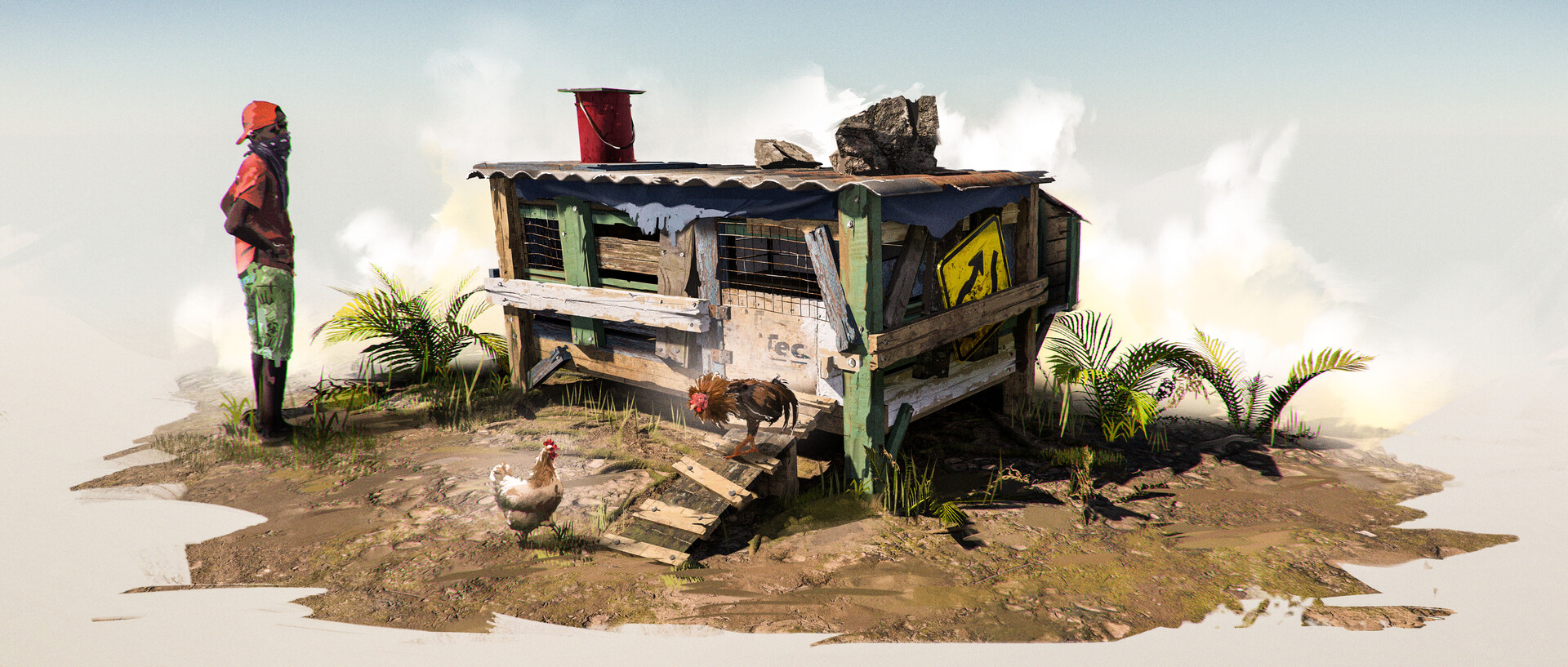It starts May 12, and ends Oct 17. Let's see what you got!
https://polycount.com/discussion/237047/the-brawl²-tournament
Best Of
Re: Sketchbook: Frank Polygon
@wirrexx @sacboi Below is a link to the video showing the boolean block out process described in the write-up.
This is just one example, there's other ways to use the same tools to accomplish similar results. When to apply the modifiers really comes down to how the model will be used and whether or not there's a possibility of revisions. Generally a good idea to save a copy of the working files before applying the modifiers and moving on to the next stage in the modeling process. Just comes down to finding an order of operations that works best for the individual artist and the project.
Shuparnkha (Realtime Character)- Ravana's Sister
This is personal project, a real time character which I have done after 4-5 year, I mean a complete character for games.
also this is a longest project for me , I was working on this since last 8-9 months, I am always passionate about Indian Mythological stories.
So I started this one with a quick bust sketch, which became a full concept character later on.
She is a sister of Ravana, and also the primary reason for Ramayan Story.
Hires is done in Zbrush, Textures in Substance Painter, Lowres in 3Ds Max, UVs in RizomUV, Baking and Rendering in Marmoset.
Hair- Created in Xgen and placed it in Zbrush.
Total Polycount is around 125000 Tries.
Texture Sheets are 4k
[FINISHED] Mad Science Gun - Seeking feedback
Hi everyone, today I finished rendering this portfolio piece I've been working on for about three months now. I'm trying to get it as high quality as I possibly can.
I could really use some feedback as I'm having a hard time seeing it for what it is after working on it for so long.
Original concept by Bruce Yu.
I'm really curious to hear what you think about the material as well as the renders (lighting, composition), and how it could be improved further!
 JorisArt
JorisArt
The Bi-Monthly Environment Art Challenge | May - June (78)
Hey everyone and welcome to the 78th Bi-Monthly Environment Art Challenge for the months of May and June!
This challenge is a way for real-time 3D artists to test their skills and create a piece of work based on concepts provided. It's open to those of all skill levels and we do our best to provide meaningful feedback along the way so everyone can come away from the challenge with actionable points on which they can improve their craft!
Anyone is welcome in this challenge no matter your skill level! It's a test of your own ability not a competition between members. We're all here to improve as artists and learn from each other.
- ENVIRONMENTS -
HARD SURFACE ENVIRONMENT:
Flooded library by Tarmo Juhola
https://www.artstation.com/artwork/D5KgZ0
STYLIZED ENVIRONMENT:
The Lost Grove by Neil Richards
https://www.artstation.com/artwork/oem14
- PROPS -
HARD SURFACE PROP:
Chicken Coop by Philipp Rademacher
https://www.artstation.com/artwork/YKzJyV
STYLIZED PROP:
"Swale eaters": Fish chasers pathway by Mariia Tverdohleb
https://www.artstation.com/artwork/4blYRk
- RULES -
Please read all the rules before starting:
- Try to post at least one critique for every post that you make. This will make for a better learning environment and help us all grow as artists.
- Try your best to finish as much as you can in the time frame provided, but remember even if you don't finish by the end of the challenge we encourage you to keep pushing and finish your piece!
- Post what you are working on in this thread so that way it's a more centralized place for advice and critique. Please avoid creating a new thread as we don't want to spam out the forums.
- It is recommended to use a game engine to present your work. Unreal Engine, Unity, and CryEngine are very common engines that can be used but feel free to use any alternatives that you want. (Marmoset Toolbag for example.)
- Feel free to change up your chosen concept a bit if you want! Interpret these concepts to your liking, especially if your aim is to add storytelling elements.
- If you finish your project and decide to post it to Artstation, make sure you give credit to the concept artist in the form of a link to their profile. Additionally, it is recommended to ask a concept artist for their permission to post a 3D piece based on their work before doing so.
- RECOMMENDATIONS -
- When you are just starting out making a scene, it can seem complicated or imposing. Take your time planning and blocking out, it will set you up for success later on.
- Think about how you can re-use assets, re-use textures, break it down as simple as possible and plan it out. A lot of people will break it down in their own way when they start out their challenge. Gather some reference images as well for different parts of the scene, don't be afraid to make it your own.
- We strongly encourage you to go and look at other games and see how they make their assets as well as get concept art to give it your own feel.
The goal is to learn and grow both artistically and in your ability to both give and receive critique, but don't stress about it and remember to have fun!
Good luck!
 Pinkfox
Pinkfox
Re: What Are You Working On? (3D) 2022
I'm sculpting an Orc inspired by the dark fantasy series by Bjorn Hurri. It's a blast and fulfilling to be creating some fantasy-inspired work. I'll be polishing it more and continuing to post my work-in-progress to my sketchbook here: https://polycount.com/discussion/206688/sketchbook-vincent-khornebread-barksdale#latest
Thanks for looking!
 SubtleModeling
SubtleModeling
Re: The Bi-Monthly Environment Art Challenge | March - April (77)
A bit late but I really enjoyed working on the hard surface environment, here's what I have :)
And a quick video showcase: https://www.youtube.com/watch?v=_SC1hmPpnlE
Getting the lighting right was a good challenge for me. It was also a good occasion to finally move to UE5 ^^. Also a good occasion to practice trim sheets and modularity so thanks a lot for the concept 🙏.
I'll still be working on this for another week to get some things polished. Any feedback is more than welcomed :).
 simonBreumier
simonBreumier
Re: FYP: Viking village
Updated lighting (still need to make some adjustments but i'm quite happy with where its at ATM)
Still need to do a lot of work as well as a general color grading past as well as tweaking some values (Some areas are still a bit dark cause my monitors are a bit too bright) As always any feedback or critique is massively appreciated :D
Re: hey what's up?
Good to see you, too! I have not been on Polycount much, for a while now. Over the years, lots of roles as a contractor sort of took it's toll, health issues, unemployment and whatnot. Finally have some stability with AmazonGames, and sort of looking to re-spark my outside-of-work love of the craft, which has fallen off over the years. So hopefully I'll be around a bit more, posting art and such 😊
Re: The Bi-Monthly Environment Art Challenge | May - June (78)
Hello I'm just starting. It's my first time doing one of these!
Re: Sketchbook: Frank Polygon
@wirrexx Currently putting together a brief video of the modifier based process and will follow up by posting it here.
Most of the modifiers in Blender inherit a transform orientation that's based on the object's stored rotation. Managing this, along with object origin points, does add another layer of complexity but also provides flexibility in how things can be setup. Transforms in object mode can be stored and reset but the same operations in edit mode cannot, since they are directly changing the mesh. So, it's often helpful to keep the object's transforms zeroed out to match the global values. Depending on the follow up questions this topic could become it's own write-up or video.

